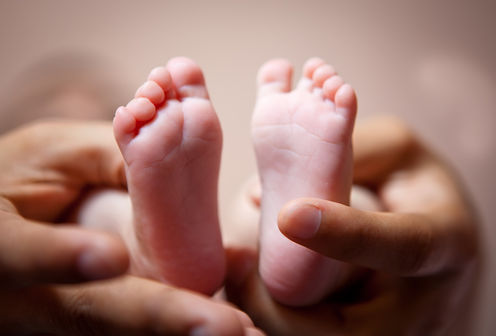
The story of baby Gammy and his “surrogate” mother has captured the world’s attention, highlighting just how complex and fraught commercial surrogacy arrangements can be. It also shows Australia is right to prohibit commercial surrogacy – and why other countries should do the same.
Gammy was born with Down syndrome and a congenital heart condition. He is a twin, conceived as a result of a commercial surrogacy arrangement between an unidentified Australian couple (the “genetic parents”) and Pattaramon Chanbua, a Thai national whose family was struggling to pay off debts. Ms Chanbua was paid 350,000 baht (A$11,700) to carry and bear a child.
According to Ms Chanbua, when it was discovered she was carrying twins, she was offered an additional 70,000 Baht (A$2,000). But when doctors further discovered one of the babies had Down syndrome, she was told to abort the affected twin. She refused on religious grounds and, after the twins’ birth, the Australian couple left with only the healthy girl.
The Australian father has since claimed the couple did not know about the other child. But Ms Chanbua states the father came to the hospital to see the twins. It’s unclear what role the surrogacy agency played.
However it played out, baby Gammy was left with Ms Chanbua, who loves and cares for him, but struggles to pay his medical expenses. The story has attracted international outrage, and a public campaign to raise money for baby Gammy’s care.
The legal situation
The majority of nations that regulate surrogacy worldwide, prohibit commercial surrogacy. Such prohibitions are largely based on views that commercial surrogacy commodifies women and children, and poses an unacceptable risk of exploitation and human trafficking.
All Australian states and the Australian Capital Territory prohibit such arrangements here. New South Wales, Queensland and the ACT further prohibit people from travelling to other countries to engage in such practices. The Australian government lists these prohibitions in its reports to the United Nations to show we meet our international obligations against the sale and trafficking of children.
However, a minority of nations have allowed (or continue to allow) commercial surrogacy to occur: Guatemala, Russia, the Ukraine, India and some US states. As a consequence, brokers, lawyers, and clinics have encouraged people wishing to have children to travel to such destinations to “realise their dreams” of having a family.
At the time of the arrangement that resulted in Gammy’s birth, draft laws in Thailand had not yet been enacted, and the practice appears to have been unregulated. Thailand was seen as a particularly favourable destination as the cost was also low, compared to the United States, for example, where surrogacy can cost up to $100,000.
When things go wrong
Some people who engage in commercial surrogacy are already breaking the law in their own country. Others have found themselves in complex situations where the legal parentage and citizenship of the children is unclear.
In addition, people who remove children from Thailand without the approval of the Thai government would be subject to Thai anti-trafficking laws.
The baby Gammy story also highlights human rights issues in commercial surrogacy arrangements.
Note that the request for Ms Chanbua to have an abortion would have been illegal in Thailand, unless her health was at risk, or the pregnancy was a consequence of sexual assault. Neither appears to have been the case.
Ms Chanbua refused on religious grounds, and by choice carried the pregnancy to term. But other women may not be able to do the same. In India, some women are required to sign a contract agreeing that they will abort on demand.
No room for commercial surrogacy
Some surrogate advocates, lawyers and agencies argue that it would be better to permit commercial surrogacy in Australia, as if we could somehow prevent exploitation and commodification, as well as the social, cultural, economic and racial disparities.
Some point to the “happy stories” of surrogacy fulfilling the dreams of would-be parents of having a family. And no doubt, there are families who must be happy having had a child they can call their “own”.
But what we must not forget are the realities of this “business”. We so often do not hear about the number of abortions it took to get the final product right, or the miscarriages, the early births, the pregnancy complications, the babies left behind, or the reasons why the surrogate entered the arrangement for money in the first place. Whenever commercial surrogacy takes place, there are risks and power imbalances.
When the surrogacy “support services” refer to “the market” in which they operate, we, as a nation, should stop and think. We must not ignore the extent to which commercial surrogacy arrangements can exploit and commodify women and children. We might also think about how such a business preys on people’s desires to have children.
While baby Gammy’s story certainly calls for government support and action, the focus should not be on how to support the commercial surrogacy “market”, or to broaden the “market” to Australia.
Rather, we should focus on how to protect the rights and welfare of children and women in line with global human rights standards. This includes the continued prohibition of commercial surrogacy arrangements.
Sonia Allan does not work for, consult to, own shares in or receive funding from any company or organisation that would benefit from this article, and has no relevant affiliations.
